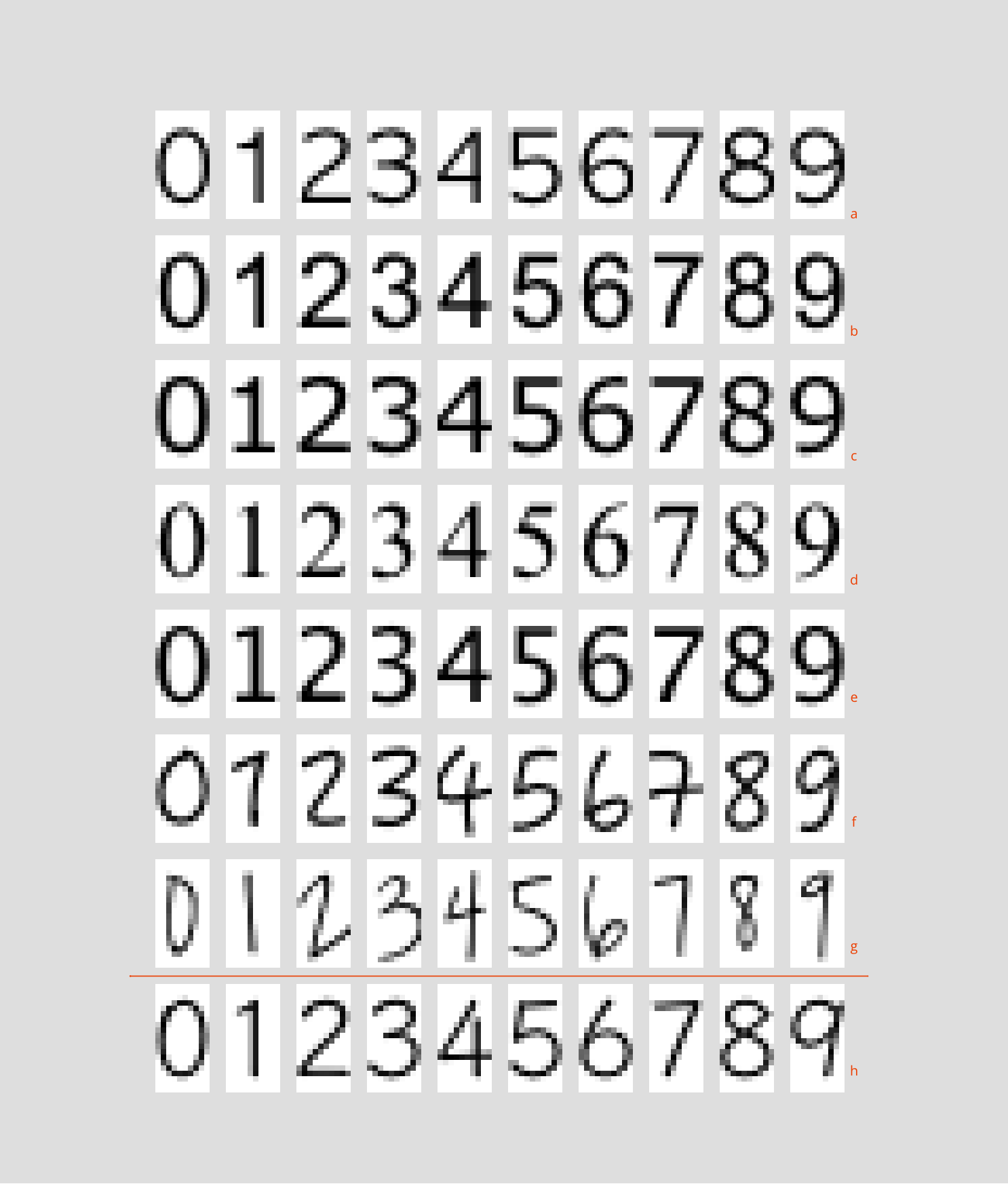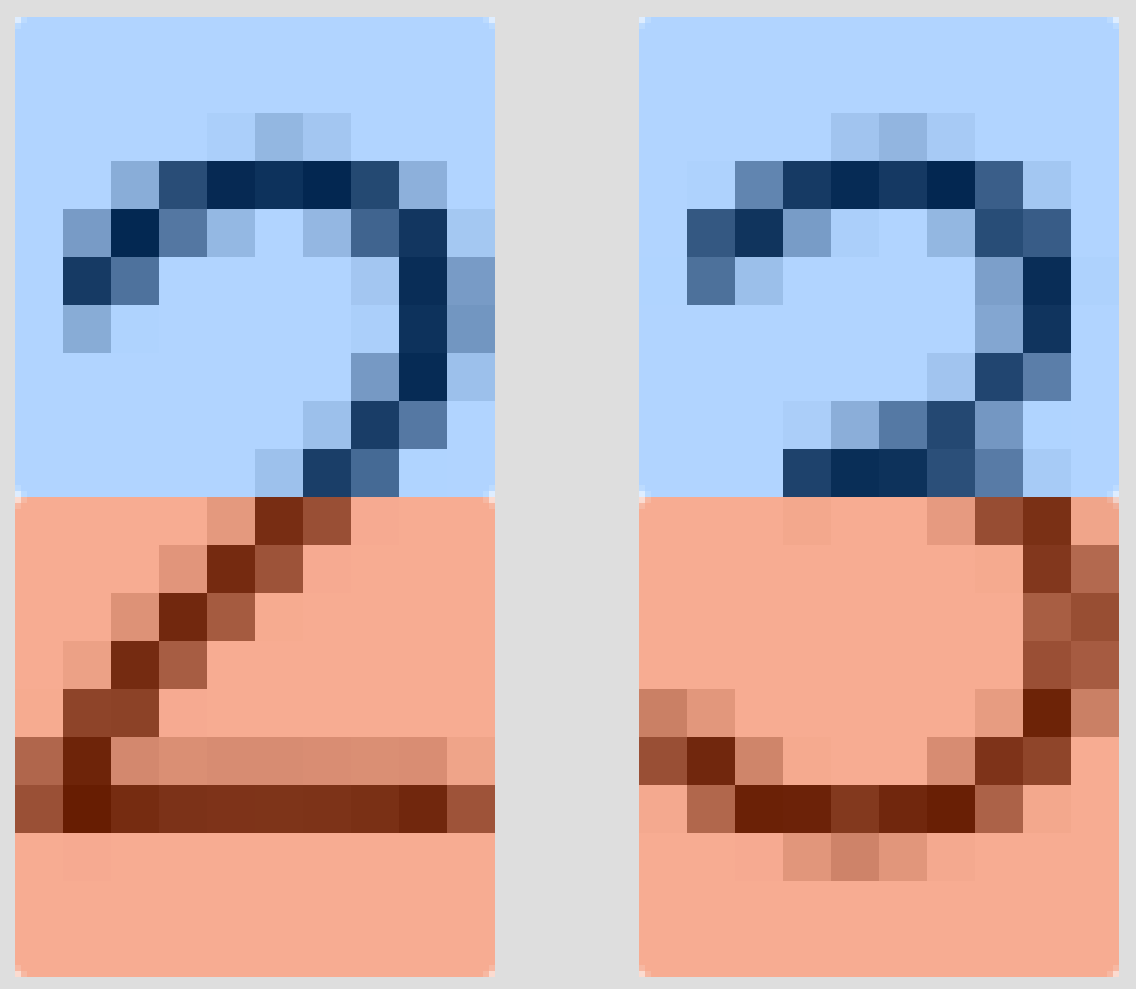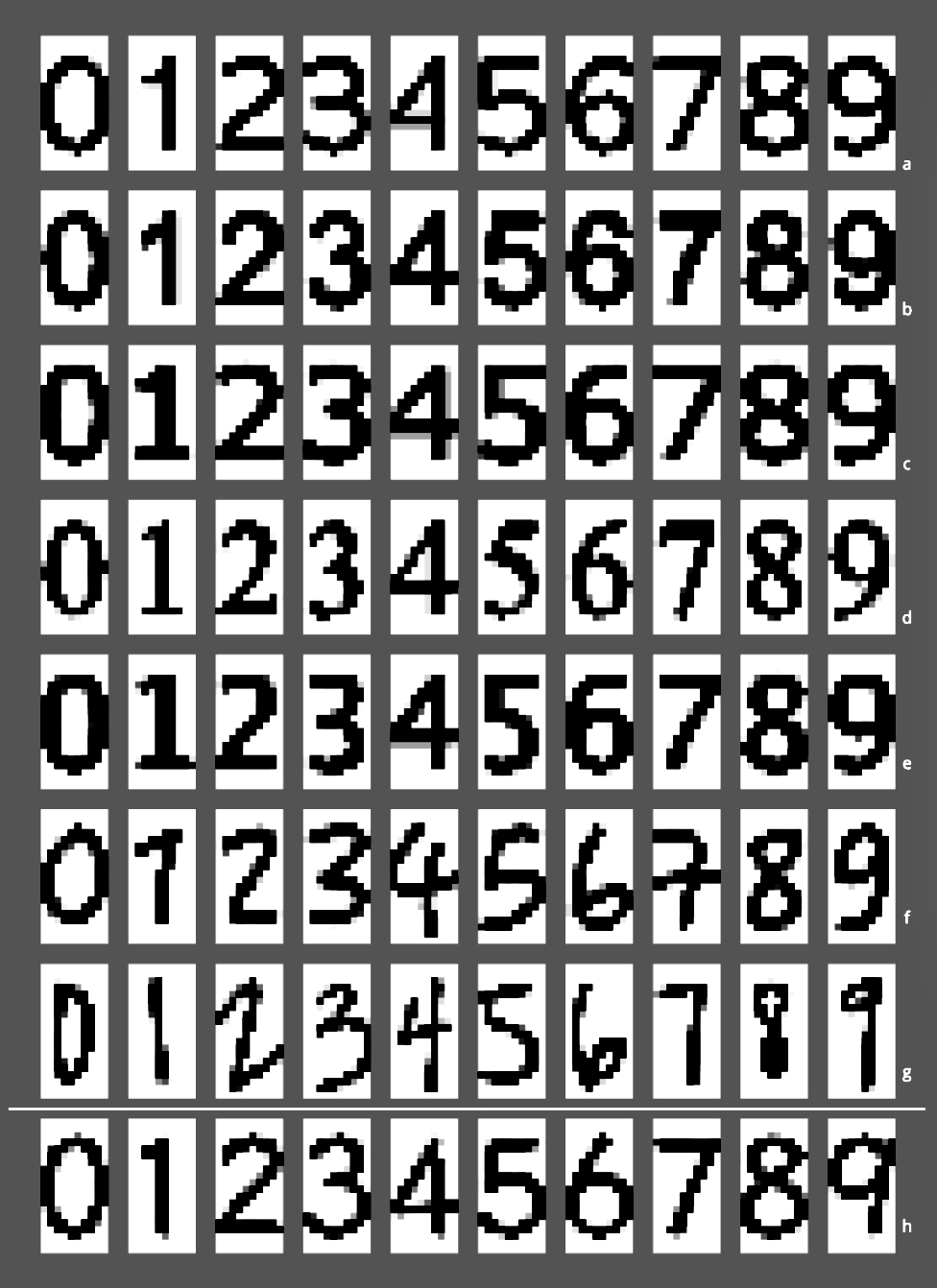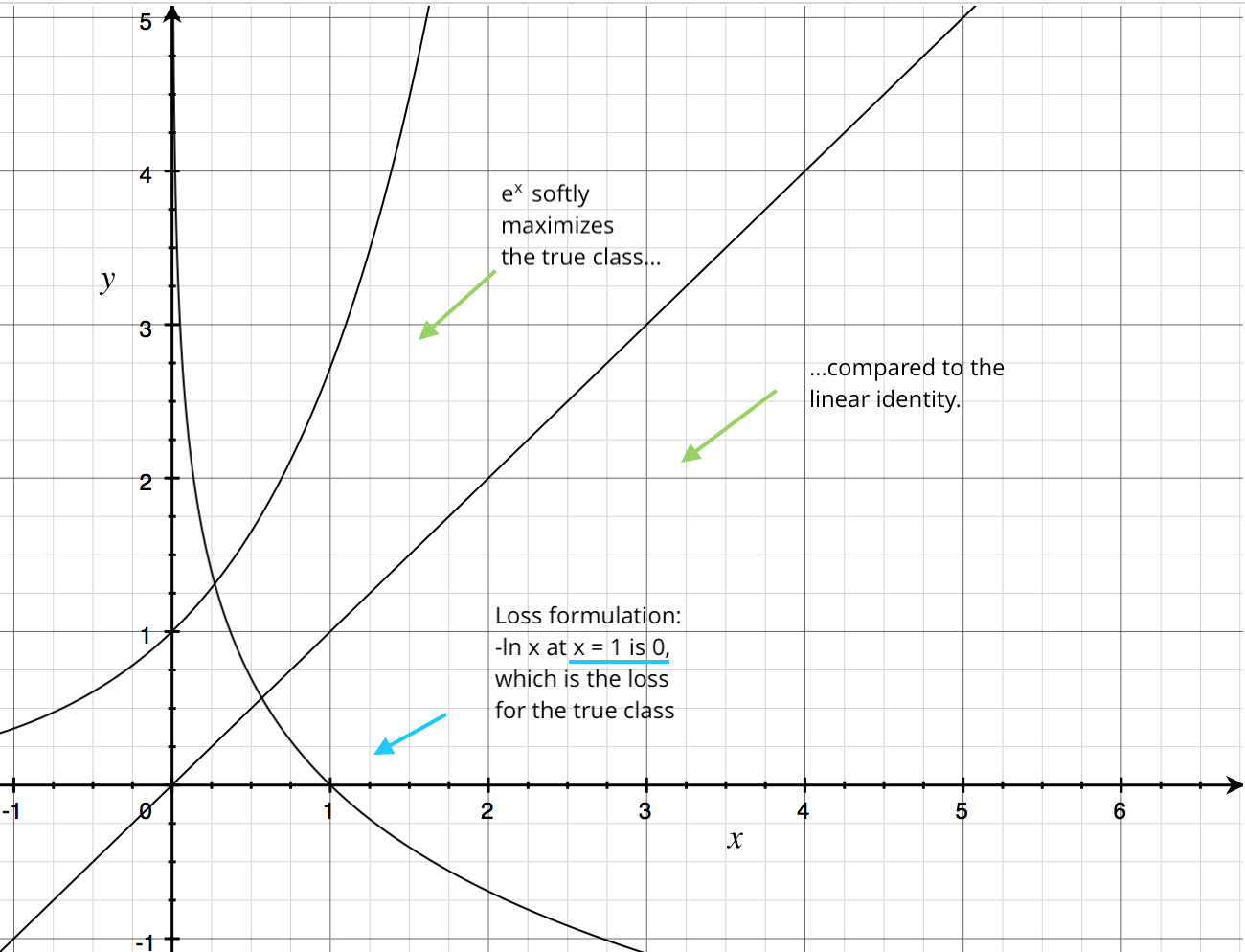



def digitSet2Vec(path: String): Seq[DenseVector[Double]] = {
val selector: Int => Boolean = _ < 255 // Our selector, 0 for a white (255) pixel, 1 for everything else
(0 to 9) map (i => extractBinary(getResourceFile(path + s"$i.png"), selector)) // Image flattened as vector
}

val sets = ('a' to 'h') map (c => getDigitSet(s"img/digits/$c/"))
val xs = sets.dropRight(1).flatMap { s => (0 to 9).map { digit => s(digit) } }
val ys = sets.dropRight(1).flatMap { m => (0 to 9).map { digit => ->(0.0, 0.0, 0.0, 0.0, 0.0, 0.0, 0.0, 0.0, 0.0, 0.0).updated(digit, 1.0) } }
val config = (0 to 2).map(_ -> (0.01, 0.01)) :+ 3 -> (0.1, 0.1)
implicit val breeder = neuroflow.core.WeightBreeder[Float].normal(config.toMap)
val f = ReLU
val net = Network(
layout =
Vector (200) ::
Dense (400, f) ::
Dense (200, f) ::
Dense ( 50, f) ::
Dense ( 10, f) :: SoftmaxLogEntropy(),
settings = Settings(
learningRate = { case (_, _) => 1E-5 },
updateRule = Momentum(0.8f),
precision = 1E-3,
iterations = 15000
)
)
net.train(xs, ys)
_ __ ________
/ | / /__ __ ___________ / ____/ /___ _ __
/ |/ / _ \/ / / / ___/ __ \/ /_ / / __ \ | /| / /
/ /| / __/ /_/ / / / /_/ / __/ / / /_/ / |/ |/ /
/_/ |_/\___/\__,_/_/ \____/_/ /_/\____/|__/|__/
Version : 1.3.4
Network : neuroflow.nets.cpu.DenseNetwork
Loss : neuroflow.core.Softmax
Update : neuroflow.core.Momentum
Layout : 200 Vector
400 Dense (R)
200 Dense (R)
50 Dense (R)
10 Dense (R)
Weights : 170.500 (≈ 0,650406 MB)
Precision : Single
O
O
O O O
O O O
O O O O O
O O O O O
O O O
O O O
O
O
[run-main-0] INFO neuroflow.nets.cpu.DenseNetworkSingle - [14.12.2017 17:03:26:824] Training with 70 samples, batch size = 70, batches = 1 ...
Dez 14, 2017 5:03:26 PM com.github.fommil.jni.JniLoader liberalLoad
INFORMATION: successfully loaded /var/folders/t_/plj660gn6ps0546vj6xtx92m0000gn/T/jniloader31415netlib-native_system-osx-x86_64.jnilib
[run-main-0] INFO neuroflow.nets.cpu.DenseNetworkSingle - [14.12.2017 17:03:27:090] Iteration 1 - Loss 0,842867 - Loss Vector 1.3594189 1.0815932 0.06627092 1.2282351 0.40324837 ... (10 total)
[run-main-0] INFO neuroflow.nets.cpu.DenseNetworkSingle - [14.12.2017 17:03:27:152] Iteration 2 - Loss 0,760487 - Loss Vector 1.2405235 1.0218079 0.080294095 1.1119698 0.30945536 ... (10 total)
[run-main-0] INFO neuroflow.nets.cpu.DenseNetworkSingle - [14.12.2017 17:03:27:168] Iteration 3 - Loss 0,631473 - Loss Vector 1.0470318 0.9293458 0.10742891 0.92295074 0.16466755 ... (10 total)
[run-main-0] INFO neuroflow.nets.cpu.DenseNetworkSingle - [14.12.2017 17:03:27:178] Iteration 4 - Loss 0,528371 - Loss Vector 0.8682083 0.8433325 0.17737864 0.7455 0.062339883 ... (10 total)
[run-main-0] INFO neuroflow.nets.cpu.DenseNetworkSingle - [14.12.2017 17:03:27:188] Iteration 5 - Loss 0,439425 - Loss Vector 0.6963819 0.7676125 0.23556742 0.5764897 0.062838934 ... (10 total)
('a' to 'h') zip setsResult foreach {
case (char, res) =>
println(s"set $char:")
(0 to 9) foreach { digit => println(s"$digit classified as " + res(digit).indexOf(res(digit).max)) }
}
|
Set A 0 classified as 0 1 classified as 1 2 classified as 2 3 classified as 3 4 classified as 4 5 classified as 5 6 classified as 6 7 classified as 7 8 classified as 8 9 classified as 9 |
Set B 0 classified as 0 1 classified as 1 2 classified as 2 3 classified as 3 4 classified as 4 5 classified as 5 6 classified as 6 7 classified as 7 8 classified as 8 9 classified as 9 |
Set C 0 classified as 0 1 classified as 1 2 classified as 2 3 classified as 3 4 classified as 4 5 classified as 5 6 classified as 6 7 classified as 7 8 classified as 8 9 classified as 9 |
Set D 0 classified as 0 1 classified as 1 2 classified as 2 3 classified as 3 4 classified as 4 5 classified as 5 6 classified as 6 7 classified as 7 8 classified as 8 9 classified as 9 |
|
Set E 0 classified as 0 1 classified as 1 2 classified as 2 3 classified as 3 4 classified as 4 5 classified as 5 6 classified as 6 7 classified as 7 8 classified as 8 9 classified as 9 |
Set F 0 classified as 0 1 classified as 1 2 classified as 2 3 classified as 3 4 classified as 4 5 classified as 5 6 classified as 6 7 classified as 7 8 classified as 8 9 classified as 9 |
Set G 0 classified as 0 1 classified as 1 2 classified as 2 3 classified as 3 4 classified as 4 5 classified as 5 6 classified as 6 7 classified as 7 8 classified as 8 9 classified as 9 |
Set H 0 classified as 0 1 classified as 1 2 classified as 2 3 classified as 3 4 classified as 4 5 classified as 5 6 classified as 6 7 classified as 7 8 classified as 8 9 classified as 9 |